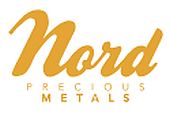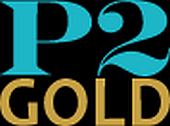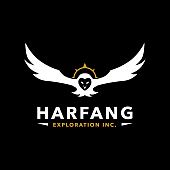 Romios samples six m of 2.28% Cu, 7.9 g/t Au at Newmont
Romios samples six m of 2.28% Cu, 7.9 g/t Au at Newmont
2019-02-05 16:28 ET – News Release
Mr. Tom Drivas reports
ROMIOS PROVIDES UPDATE ON ITS NEWMONT LAKE PROJECT AREA IN THE GOLDEN TRIANGLE AREA, BC
The date for receipt of regulatory approval of the definitive agreement dated Nov. 29, 2018, between Romios Gold Resources Inc. and Crystal Lake Mining Corp. to option the company’s Newmont Lake property in the Golden Triangle area of northwestern British Columbia to Crystal Lake Mining has been extended by the parties to Feb. 22, 2019. The terms of the option were set out in the press release dated Sept. 24, 2018. The agreement was approved by the shareholders of the company at the annual and special meeting held on Jan. 11, 2019.
The company also wishes to provide an update to shareholders on the results of a two-week field program completed by its geologists in early October, 2018, on the Newmont Lake property. Highlights include the discovery of significant copper-gold values in large iron carbonate veins at the Ken-Glacier skarn zones, a new style of dolomite-hosted copper mineralization at Burgundy Ridge, and high-grade silver/lead/zinc plus or minus copper/antimony mineralization at the Cuba North prospect.
Highlights:
- 2.28 per cent and 7.9 grams per tonne gold over 6.0 metres (Ken zone, chip sample of iron carbonate vein);
- 1.69 per cent copper, 4.9 grams per tonne gold and 18.3 grams per tonne silver over 4.1 metres (Ken zone, chip sample of calcite vein);
- 12.7 grams per tonne gold and 12.4 grams per tonne silver (McLymont fault pyrite vein, grab sample);
- 833 grams per tonne silver, 3.1 per cent zinc and 9 per cent lead (Cuba North, float sample).
Romios’s vice-president, exploration, John Biczok, PGeo, commented, “We are very encouraged by the high-grade mineralization discovered at several of the sites during the fall program and believe that we now have a much better understanding of where to drill in order to locate the core of these mineralized systems in the upcoming summer drill program.”
Ken-Glacier copper-gold-silver skarn zone
Two lines of chip sampling were completed at the Ken zone across a large iron carbonate vein, which is exposed for up to eight metres in width and at least 25 metres in length. They returned assays of 6.0 metres of 2.28 per cent copper and 7.9 grams per tonne gold plus 4.3 metres of 1.32 per cent copper and 4.75 grams per tonne gold. This and other smaller veins in the area appear to be part of a widespread network ranging from local very high grade copper-gold-silver-(cobalt)-carbonate veins (for example, 10.4 per cent to 11.5 per cent copper, 30.3 grams per tonne to 32.5 grams per tonne gold, under one gram per tonne to 135 grams per tonne silver and 372 parts per million to 635 parts per million cobalt across widths of 0.5 metre to 1.0 metre; reported in Romios’s news release dated Sept. 10, 2018) to broad zones of barren background iron carbonate alteration. It is believed that this vein-hosted mineralization is part of an over-10-metre-thick iron-rich halo around the skarn horizons and it provides an additional promising drill target flanking the skarns. The apparent source pluton for the mineralizing fluids was found 300 metres from the Ken zone and the intersections of the skarn layers, with that pluton now being a high-priority drill target for 2019.
Burgundy Ridge copper-gold-silver skarn zone
Mapping and sampling on the over-400-metre-long Burgundy Ridge skarn in September identified a number of well-mineralized boulder trains assaying from 1.78 per cent to 5.4 per cent copper, 0.22 gram per tonne to 2.37 grams per tonne gold and seven grams per tonne to 54 grams per tonne silver (samples are individual grabs or composites from up to 10 talus boulders). Outcrops of a newly recognized homogeneous copper-bearing skarnified dolomitic marble intermittently exposed across widths of 25 metres to 30 metres returned assays ranging from 4.3 metres of 1.33 per cent copper, 2.85 per cent zinc and five grams per tonne silver to 5.3 metres of 0.64 per cent copper, 1.34 per cent zinc and six grams per tonne silver. The true width and continuity of this zone are uncertain, but the zone was targeted by two reverse circulation drill holes drilled by Crystal Lake Mining in October (all assays are pending).
Mapping of the Lower high-grade zone revealed that the syenite dike forming the core of this system widens from five metres to 35 metres before it disappears from view westward under an icefield. Chip samples along the edges of the dike returned high-grade assays in July, 2018 (for example, 3.8 metres of 2.58 per cent copper, 2.37 grams per tonne gold, 46 grams per tonne silver and 7.4 per cent zinc; previously reported). Three chip samples taken in September at the westernmost exposure returned values ranging from anomalous up to 1.77 per cent copper, 2.6 grams per tonne gold and 26.4 grams per tonne silver, suggesting that the mineralization may extend under the icefield. Due to weather and time constraints, this high-grade target could not be drilled by Crystal Lake Mining in October, 2018, and remains a high-priority drill target for 2019.
McLymont fault pyrite vein
An over-one-metre-wide gold-copper-enriched massive pyrite vein discovered in July south of the North West zone has now been found at several sites over a length of 260 metres along the north-northeast-trending McLymont fault. A one-metre chip sample of this vein in July assayed 0.56 per cent copper and 0.99 gram per tonne gold and grab samples from the northernmost outcrop in September range from 0.17 gram per tonne to 12.7 grams per tonne gold, two grams per tonne to 12.4 grams per tonne silver and 0.04 per cent to 0.4 per cent copper. The wide range in gold values and unknown total width of the pyrite vein warrant trenching and systematic channel sampling in future. It is unclear at this point if the pyrite vein is part of the plumbing system for the nearby North West zone or a separate vein system.
Cuba zones
High-grade silver/lead/zinc plus or minus copper/antimony veins and newly discovered clusters of boulders were sampled during a brief examination of the Cuba North and South showings near the east margin of the Newmont Lake graben. Mineralization is found within wide zones of coarse barite and carbonate veins in a prominent north-south fault-cutting Permian limestone. Various grab samples returned individual metal values ranging from 55 grams per tonne to 833 grams per tonne silver, 0.002 per cent to 9 per cent lead, 0.36 per cent to 10.3 per cent zinc, 0.02 per cent to 0.64 per cent copper and 0.008 per cent to 0.34 per cent lead. The precise source of the most mineralized float is uncertain and warrants further investigation by geophysics (induced polarization), soil sampling and potentially diamond drilling.
Romios’s Golden Triangle area project consists of 80,706 hectares and is located north of Pretium’s Brucejack mine, KSM’s Seabridge project and Garibaldi’s nickel-cobalt discovery — a short distance west of Aben Resources’ Forrest Kerr gold project; and south of Teck Resources’ and Newmont Mining’s Galore Creek project. The Newmont Lake project is located approximately 15 kilometres from infrastructure (power and road) and contains a National Instrument 43-101 inferred resource estimate of 1.4 million tonnes of 4.43 grams per tonne gold, 0.22 per cent copper, 6.4 grams per tonne silver at the North West zone with over 20 other mineralized zones in the vicinity. In November, 2018, Romios signed an option agreement with Crystal Lake Mining covering all of the prospects described in this release. Once the agreement receives regulatory approval, Crystal Lake Mining will have the option to earn 100 per cent in these claims by expending $8-million on exploration in the next three years, making certain cash and stock payments to Romios, and granting Romios a 2-per-cent net smelter return royalty on any future production (see Romios’s news release dated Sept. 24, 2018).
All samples were submitted to the ALS Canada Ltd. laboratory in Terrace, B.C., for assay. As a matter of procedure, a rigorous quality assurance/quality control program was implemented to ensure reliable assay results.
The technical information in this news release has been reviewed and approved by John Biczok, PGeo, vice-president, exploration, and a qualified person as defined by National Instrument 43-101.
About Romios Gold Resources Inc.
Romios Gold Resources, a progressive Canadian mineral exploration company established in 1995, is engaged in precious metal and base metal exploration primarily focused on gold, silver and copper on its properties in the Golden Triangle area in northwestern British Columbia. In addition to the properties in the Golden Triangle area, Romios holds a 100-per-cent interest in the Lundmark-Akow Lake property in Ontario, the LaCorne property in Quebec and the Scossa property in Nevada. It also holds a 2-per-cent net smelter return royalty on the Hislop property in Ontario.
We seek Safe Harbor.
http://www.romios.com/press-releases/





















